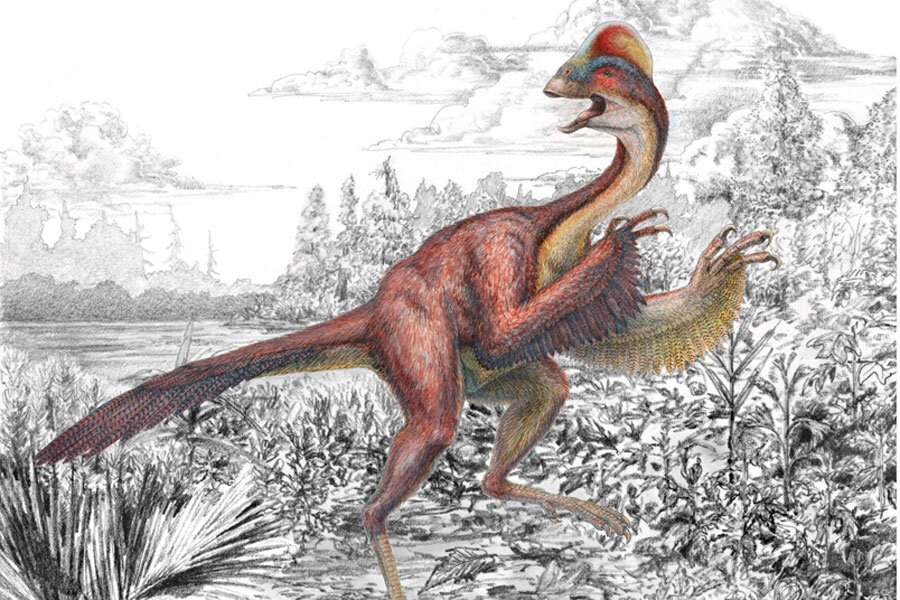What color were dinosaurs really? Bat fossils reveal clues.
Loading...
For the first time ever, researchers studying fossils have discovered extinct mammal’s true colors.
The scientists studied two species of bats, Palaeochiropteryx and Hassianycteris, who lived along a lake in a tropical forest in Germany in the Eocene Epoch, 56 million to 33.9 million years ago.
In their study published Monday in the Proceedings of the National Academy of Sciences, scientists from the University of Bristol and Virginia Tech examined bat fossils that were so excellently preserved that they retained melanosome structures.
Skeptics had previously assumed that melanosomes in other well-preserved fossils were just bacteria. But molecular paleobiologist Jakob Vinther of Britian’s University of Bristol and his team have confirmed for the first time that the structures contained melansome remnants, not bacteria, by studying the microchemistry of the fossils.
Why are melansomes so exciting?
Melansomes contain melanin, the pigment that gives certain colors to skin, fur or hair, and scientists can use the size and shape of melanins to determine their original color.
“This means that the correlation of melanin colour to shape is an ancient invention, which we can use to easily determine colour from fossils by simply i at the melanosomes shape,” Dr. Vinther explains in a University of Bristol press release.
“People had questioned whether you could use the shape of the melanosome to tell anything about the color, because it’s been through a lot. Millions of years in the ground is obviously going to take a toll,” Cailtin Colleary, a Ph.D. student in geological studies at Virginia Tech University and the study’s lead author told The Atlantic.
“So by finding traces of the chemical melanin in association with these structures, we’ve basically confirmed that you can use the shapes of the melanosomes themselves to tell what color something was,” she said.
So what color were these bats? Drum roll please….
“Well, the bats are brown,” Vinther told Reuters. “It might not be a big surprise, but that’s what these 49-million-year-old bats are. So they looked perfectly like modern bats.”
And while paleontologists are not surprised by their finding, they say it’s nice to finally know for sure.
“Since so little is preserved in the fossil record, the color of extinct animals has always been left up to artists’ interpretations, and important information regarding behavior has been considered inaccessible,” Ms. Colleary told Reuters.
What can an animal's color tell you about the species' behavior? Important stuff, like what type of environment the animals lived in, how they attracted mates, or how they protected themselves against predators, says Ms. Colleary.
“For complex animal life, color is a factor in how individuals recognize and respond to others, determine friend or foe, and find mates,” said MIT geobiologist Roger Summons, in a Virginia Tech press release. “This research provides another thread to understand how ancient life evolved. Color recognition was an important part of that process, and it goes far back in the history of animals.”
“I think we’re just scratching the surface in our ability to extract information like this from the fossil record,” adds Colleary. “As technology continues to advance, we’ll keep finding information in fossils that we don’t even know is there today.”
[Editor's note: An earlier version mischaracterized the findings.]








